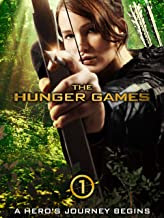Eating Alone
I've pulled the last of the year's young onions.
The garden is bare now. The ground is cold,
brown and old. What is left of the day flames
in the maples at the corner of my
eye. I turn, a cardinal vanishes.
By the cellar door, I wash the onions,
then drink from the icy metal spigot.
Once, years back, I walked beside my father
among the windfall pears. I can't recall
our words. We may have strolled in silence. But
I still see him bend that way-left hand braced
on knee, creaky-to lift and hold to my
eye a rotten pear. In it, a hornet
spun crazily, glazed in slow, glistening juice.
It was my father I saw this morning
waving to me from the trees. I almost
called to him, until I came close enough
to see the shovel, leaning where I had
left it, in the flickering, deep green shade.
White rice steaming, almost done. Sweet green peas
fried in onions. Shrimp braised in sesame
oil and garlic. And my own loneliness.
What more could I, a young man, want.
I feel that Lee, as a converted
Presbyterian minister, was attempting to connect with the possibility that the
people in our lives who have died are really just out of sight in another
existence or plain of spirits. I relate to this poem because I have had moments
where I felt the presence of family members who have passed so strongly that I
have turned my head and felt like I just missed the sight of them. This theme
is presented though symbols and personification.
Lee uses the symbols of flame and the
cardinal in this line, “What is left of the day flames in the maples at the
corner of my eye. I turn, a cardinal vanishes” (970). Cardinals, in many
religions represent loved ones who have died. In Christianity, red cardinals
are a symbol of the fire of the living spirit. Lee used the word “flames” just
before the almost sighting of the cardinal to great symbolic effect. Even
though the word “red” isn’t present, it is inferred by the flames and the fact
that male cardinals (male, like his father) are inherently red. Pair that with
the “flickering, deep green shade” (Lee 971) near the end of the poem after he
thought he saw his father, but realized it was a shovel instead. Green is the
symbol of renewal in nature, and of resurrection and rebirth in Christianity.
The symbolism is enhanced by the inferred red in flames, while the shaded green
flickers like those loved ones in the spirit realm or the hint of Lee’s father
leaning against the tree might flicker just out of sight.
Personification is used sparsely in
one instant when Lee thought he saw his father, to realize moments later that
it was “the shovel, leaning where I had left it” (971). Using the element
of personification only once made it
stand out that much more in the way that a thing, the shovel, for the briefest
of seconds in the flickering light looked like his deceased father, leaning,
almost in the way he had mentioned his father earlier while alive with “left
hand braced on knee, creaky” (Lee 970). The similarities of the poses makes the
personification of the shovel realistic that it could have been mistaken for
his father. Even though the shovel wasn’t his father, it echoes the theme that
it could have been because he is there, renewed, flickering out of our view,
but in the realm of spirits that is so very close.
The use of personification felt very
real to me as I’ve had the same things happen to me, glimpsing what I wanted,
but in reality was something else but looked so familiar simply by the way the
item was positioned or “leaning”. Seeing the shovel momentarily as his father, made
the poem more meaningful to me on a personal level. The symbols employed also
enhanced the meaning of the poem, realizing that the cardinal barely glimpsed
is symbolic of loved ones gone, but who are really only just out of our mortal
sight is also deeply effective, even as daily life goes on as we prepare meals,
drink the icy jolting water, and eat our meal in lonely quiet. Because even though
our dead are near, they still aren’t with us, and are missed deeply.
Work
Cited
Lee,
Li-Young. “Eating Alone.” Literature: The Human Experience, edited by Richard
Abcarian, et al., Bedford/St. Martin’s, 2016, pp. 970-1
poem borrowed from The Poestry Foundation





